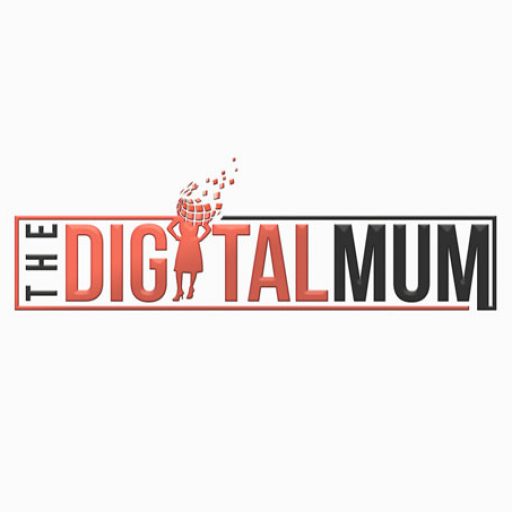Table of Contents
It is not surprising that Google has named their next rollout MUM. They are not talking about keeping quiet or (to keep MUM about it), but rather, GoogleMUM is going to be the encompassing motherly rollout that will bring together all the little members of the google search family into one happy place.
Google MUM doing a motherly role by bringing everything together.
I’m glad to see the feminine come back in power after BERT.
MUM is going to be 1,000 times more powerful than BERT.
Google BERT (Bidirectional Encoder Representation from Transformers) was the 2018 AI update, that was used to understand users’ search intention and content by understanding words and phrases, processing information using natural language.
*This post may contain affiliate links, which means I’ll receive a commission if you purchase through my links, at no extra cost to you. Please read full disclosure for more information*
What Is Google Mum?
Google explains it all on their blog post in May 2021: MUM: A new AI milestone for understanding information
MUM simply put stands for Multitask Unified Model (MUM).
It is in the beta phase and still in development, but its aim is to improve search results.
I know just when you thought that they couldn’t improve it anymore, it goes to show that no matter how good you are there is always room for change.
The MUM model aims to continue to improve user experience.
It will do this by providing information which will be more in keeping with talking to your best friend for advice.
You know the knowledgeable one who knows just about everything on any topic.
When you ask about buying a new house.
She can tell you the areas to avoid, the cheapest places, the best schools, the best mortgage broker, which mortgage to get, and so on.
Google MUM is going to be like that.
Your knowledgeable online mum who seems to know the answer to everything.
And tells it to you easily so you don’t have to go searching everywhere to find out what you really need to know.
How will Google MUM do this?
Instead of relying on keyword search or formats like that, it will look more naturally at what the user intent is and look through the databases and provide a more comprehensive result.
Rather than having to search for each term separately, for example, when you want to buy a house or plan a holiday, with MUM you will only need to ask one question.
Google MUM will intuitively know that if you are going on holiday, you will want to know the answer to a whole host of other questions as well.
Such as do I need a jab, do I need a COVID certificate, when is the best time to visit that place, where can I stay, what do I need to pack, what areas should I avoid.
MUM plans to be able to tell you everything that she knows on the subject, just to make your search life even easier than it already is.
How Does Goggle MUM Plan to do this?
- Use of Multiple Languages
MUM is going to be multi-lingual. Able to understand and translate 75 different languages.
So, if you search in English about a foreign country but it cannot find information in English about what you are looking for, GoogleMUM will search in that language for the search topic.
It will then translate it into English and show you the result.
This also works the other way round too for non-English speakers, searching for topics about the UK or USA for example, GoogleMum will find that information and then show this to them in their language.
- Use of Images and Videos
GoogleMum will have eyes as well, just like your mum with eyes at the back of her head.
MUM will be able to read and understand not just text but images and videos as well.
If the images are relevant, then your content will be shown.
But that’s not all.
You will be able to search using an image and not just text.
The example from the horse’s mouth so to speak shows an image search of a pair of hiking boots with the question
“Can I use these to go to Mount Fuji?”
What will happen is
“Google will check on whether these boots are suitable if not will throw up suggestions of suitable boots and where you can get these, and then go further to give you more information on walking up Mount Fuji and other related searches about what you might need to know.”
In the future, you’ll need fewer searches to get things done.
As you can see this is going to be huge, for google search.
But what does this update mean for bloggers and those reliant on SEO.
What Does This Mean For Bloggers?
Don’t panic yet, as this is still in beta.
Therefore, it could be some time before Google is able to make this MUM technology come to life.
What this will mean for bloggers is that Google will no longer just be looking at the top 10 results on the search results page.
It will look at the next page and the next until it finds information that is relevant to the user intent.
This is good news for new bloggers or those who don’t have a high enough page ranking, and who may only dream of ever reaching page one in the google search results.
Because now Google will search for relevant information no matter how far down the search result you may be.
If your blog post answers what that topic covers then there is a higher than ever chance that you may be shown.
Unlike before when you were trying to rank against the top 10 ranking posts who had built authority on the topic.
What Should Bloggers Do Differently?
What you do need to do is continue to write quality content that is relevant, engaging, and answers the topic.
You should continue to build your brand.
Do this by building your authority.
These factors will still be more likely to be the difference between appearing in the GoogleMUM search result or not.
- Use Unique Images & Video Content
Bloggers should try to improve their content by using unique images and videos.
They should start to move away from using general stock image photos.
If you want to stand out above everyone else when this rollout happens.
Work it out for yourself.
If you go to most Free Photo sites, you will see that most images have been downloaded thousands maybe even millions of times.
If you can imagine millions of photos of Mount Fuji that are all the same.
But if you have visited Mount Fuji and took your own unique shots, then Google might just choose to show what you offer, which is different from everything else.
Start taking your own images if you can, most phones have a good enough camera for this.
Add these to your own stock photo image library.
Consider buying images from places such as Deposit Photos rather than using free images which are more likely to have been downloaded.
Another thing that you should consider doing is to start creating videos.
And I don’t mean being front-facing to the camera, there are lots of other creative ways to make a video on the topics you are talking about.
Perhaps you can create a video of a trip you took.
Your video might break down how to put up a tent on a camping holiday.
It may show all the items that you need to pack on the holiday.
By posting unique images and videos showing your own tips about how to put up the tent, from what this update is indicating, which means this will have GoogleMUM wanting to share your blog post over other more standardised images and posts.
Furthermore, if you have affiliate links, and you show recommended gear that links with your unique images and video, then this update is more likely to point to blogs with a list of recommended gear.
How Can Bloggers Prepare for Google MUM
Bloggers who rely on SEO may be worried about how this will affect their rankings.
I’m no SEO expert, but it would be fair to say that it is too early to know until GoogleMum is at the stage where it is more ready to be rolled out.
Here is what SEO Experts and researchers have been saying about this MUM update.
To break it down, what they are saying is that producing quality content will still be vital.
Here’s why.
Google needs to have good content to show and to draw up its MUM search from.
It wants to know that your blog is reputable and that you know what you are talking about before it will show your content.
Here are the 4 actions that bloggers need to take:
- Continue to work on producing quality content
- Continue to work on building your authority in your niche.
- Start to work on developing your own images
- Start to add your own video to your content
As a blogger, you need to be able to adapt to these changes.
Each Google rollout means that bloggers and content developers need to adjust and evolve.
If you want to continue to show up in the search results, you cannot remain stuck in old ways.
Blogging is not dead, it is simply changing.
The Digital Mum spreading the word about the Digital World —
Helping You create the life that you love
Because there is another way!

*This post may contain affiliate links, which means I’ll receive a commission if you purchase through my links, at no extra cost to you. Please read full disclosure for more information*
Featured image: 123RF


